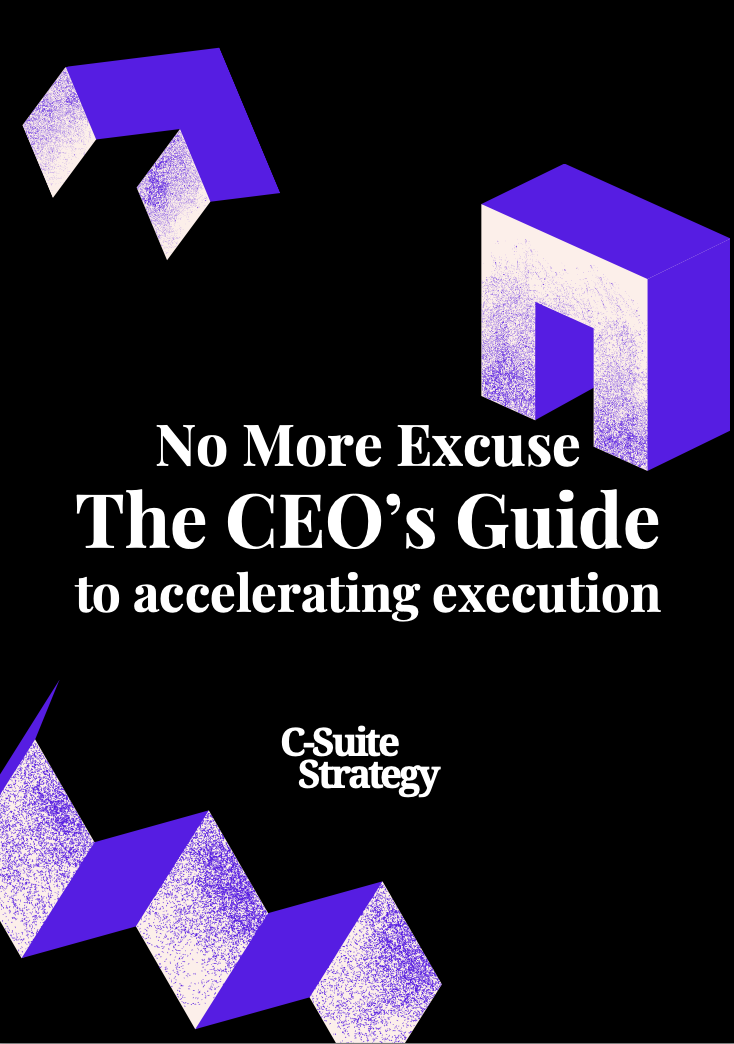
Understanding the Transformative CEO
Defining the Dynamics of Transformative Leadership
In the realm of modern business strategy, the concept of a transformative CEO is reshaping how companies approach leadership and innovation. A transformative CEO is not just a title; it signifies a paradigm shift in leadership dynamics. These leaders are often characterized by their ability to lead not just with charisma but with a strategic focus on long-term sustainability and adaptability.
Transformative CEOs are about more than just steering their companies through existing models. They have the prowess to envision and implement a strategic vision that aligns with the emerging needs of their industry. Whether it’s healthcare or technological innovation, these leaders have a knack for shaping the future.
Such leadership requires a deep understanding of both the industry context and the transformative potential of new business models. This involves strategic vision and execution that incorporates continuous innovation and a willingness to challenge traditional norms. One might say they're at the forefront, watching over the evolution of business models and customer experiences to set a precedent in leadership.
A transformative CEO can significantly impact their company’s trajectory by fostering a culture of innovation. This involves promoting risk-taking, encouraging diverse thought, and empowering employees to drive change. These leaders understand that a company’s ability to adapt and innovate is crucial to its survival and success in an ever-evolving marketplace.
Moreover, the leadership style of transformative CEOs often includes building collaborative leadership teams. By surrounding themselves with forward-thinking, strategic minds, these leaders create a think tank environment that thrives on collective intelligence. The result is a comprehensive strategy that aims at sustainable business transformation. In relation to this, consider crafting a compelling corporate story to ensure your company’s narrative is not only engaging but strategically aligned with your transformative goals.
Strategic Vision and Execution
Shaping a Future-Ready Vision
A transformative CEO has the unique ability to craft a strategic vision that not only aligns with current business demands but also anticipates future trends. This requires a nuanced understanding of the marketplace, along with an agile approach to shifting dynamics. Transformative leaders excel in scrutinizing the landscape of healthcare, technology, and customer experience to develop a long-term strategy that adapts as new challenges emerge. Integrating diverse perspectives into decision-making processes is vital for transforming business models effectively. By engaging stakeholders from all levels, including the chairman, the board, and employees, visionary CEOs ensure their strategic vision is well-rounded and robust. This collaborative approach fosters buy-in across the organization, aligning teams towards a common goal.Executing Strategy with Precision
A clear strategic vision sets the stage for effective execution. Transformative CEOs understand the importance of translating high-level strategies into actionable steps. In doing so, leaders must balance innovation with practicality, ensuring that new initiatives align with the company's existing business model while pushing boundaries. This could mean re-evaluating traditional strategies like those used at leading companies such as Marriott International or Siemens Corporation to enhance competitiveness. When implementing strategy, transformative CEOs pay close attention to their leadership teams, promoting a culture where innovation thrives. Providing teams with the tools and freedom to pursue bold ideas encourages a forward-thinking mindset, transforming the organization from within. In this manner, execution becomes not just a plan but a live adaptive process that continuously evolves with the business climate. For those looking to delve deeper into enhancing this aspect of leadership, an MBA newsletter offers valuable insights into strategic vision development, along with practical examples of implementation in various industries.Navigating Change and Uncertainty
Embracing Challenges with Resilience
A transformative CEO understands that today's business landscape is filled with uncharted territories and ambiguous horizons. Embracing change is not merely a necessity but a strategic advantage. As companies face disruption, the ability of CEOs to steer their organizations with agility and foresight comes to the forefront. In today's fast-paced world, leaders must become adept at discerning patterns from chaos. They are tasked with predicting potential disruptions and then skillfully navigating their businesses through these changes. Whether it involves adapting to a digital business model or confronting external economic pressures, CEOs play a pivotal role in molding the future direction of their companies. Business transformation necessitates a solid foundation where strategic vision meets execution. Initiatives such as restructuring the organization or launching innovative products cannot succeed without thorough planning and an adaptable mindset. CEOs must anchor their strategies in resilience, preparing their organizations to pivot swiftly when unexpected challenges arise. Moreover, fostering a culture of innovation is essential. By cultivating an environment where creative ideas can flourish, transformative CEOs equip their companies to not only react to change but also to drive it. This proactive stance positions organizations to lead rather than follow, ensuring long-term relevance in a dynamic market. For further insights on navigating changes with impactful leadership and strategic foresight, explore more about effective strategies at navigating the path to effective transformation strategy.Fostering a Culture of Innovation
Creating a Culture of Forward-Thinking
In the rapidly evolving landscape of modern businesses, fostering a culture of innovation is paramount for transformative leaders at the helm of companies. CEO roles are increasingly those of visionary stewards, navigating teams through uncharted territories. This atmosphere of innovation is vital to adapt to market demands and shifts in consumer preferences, whether within the realms of healthcare or hospitality. Establishing a robust culture of innovation begins with an openness to new ideas throughout the organization. Transformative leaders understand the importance of encouraging employees at all levels to contribute their ideas for future business models. This involvement cultivates a sense of ownership and aligns with the strategic vision of the company. A practical approach is integrating "innovation strategy" into the core business strategy. The president or chairman of a company should advocate for a model that continuously tests and evaluates new initiatives. This ongoing process can be adapted and refined as the company's long-term goals evolve, ensuring the company's readiness for transformation. Promoting cross-functional collaboration is another critical element. By breaking down silos and fostering an environment of open communication, leaders can tap into diverse perspectives that drive innovative solutions. Such collaborative leadership is essential for sustaining momentum and growth. Furthermore, implementing customer experience feedback loops is a vital innovation strategy. By watching how companies engage with their customers, insights can be gathered to continuously influence and refine the business strategy. These insights guide CEOs on how best to transform and adapt their policies to meet and anticipate future needs. In conclusion, transforming a business requires a culture where innovation thrives. Without fostering this culture, the vision and execution of a company's strategy may fall short, impeding the potential of transformative CEOs to lead their companies into future success.Building Collaborative Leadership
Encouraging a Synergy of Leadership Styles
In the landscape of modern business transformation, the role of collaborative leadership is paramount. For companies looking to evolve their business models, the enriching exchange between diverse leadership styles is crucial. CEOs are not just top-tier strategists but also facilitators of a unified leadership approach. A president or a chairman in healthcare or any other sector needs to synchronize different departments to work towards a common goal. This synergy multiplies the potential of business transformation, allowing newly devised strategies to flourish.
Synchronization Across Various Leadership
Transformative business strategies often require cross-functional collaboration within a company. Take companies like Siemens Corporation or Marriott International; their success stories often highlight the emphasis placed on encouraging leaders across different sectors to engage in strategic conversations with the CEO. This, in turn, enhances innovation and ensures the company's direction aligns with its long-term objectives. Leaders should strive to integrate perspectives that weave through the organizational fabric, considering future dynamics and market trends.
Engagement with Inclusive Forums
Another critical step for CEO business transformation is active participation in forums and networks. Established environments like CEO forums bring to the table the experience of leading CEOs who share insights on strategic models that work. Absorbing these varied viewpoints can guide a company's strategy, helping leaders foster a culture that aligns with innovation-driven goals.
Fostering an Open Communication Culture
Creating channels for open communication between all levels of leadership can transform the way strategic objectives are pursued. Encouraging an inclusive culture where ideas are openly discussed and evolved is instrumental for long-term growth and customer experience enhancement. Transformation is not just about change; it's about creating a new model that respects the voice and feedback from all levels of leadership.
Measuring Success and Impact
Assessing Impact and Achieving Long-Term Success
Measuring success for a transformative CEO goes beyond traditional metrics. While financial performance remains crucial, it's the qualitative impact on leadership and innovation that often defines lasting legacy. To navigate this new terrain, transformative CEOs must assess a combination of tangible results and strategic alignment.
First, contemplate the true impact of business transformation initiatives. Did the companies under your leadership successfully integrate new business models? A successful transformation is often reflected in enhanced customer experience and operational excellence.
Moreover, as a transformative CEO, evaluating the strategic vision to ensure it aligns with the company's enduring goals is paramount. This typically involves revisiting the strategic objectives set forth in your tenure as president CEO and determining whether they fostered a resilient business prepared for future challenges.
For stakeholders, clear communication of the impact your leadership had on the organization is key. Engage them by sharing stories of change and innovation that illustrate the newfound direction. The future is shaped not just by what was achieved, but by the foundation laid for continued growth and adaptation.
Finally, recognize that a transformative strategy must be iterative. Continuous measurement and refinement, guided by insights gained from challenges navigated, are essential for sustained success. This iterative approach ensures that the legacy of a transformative CEO is one of lasting relevance and impact on both the company and its industry.














